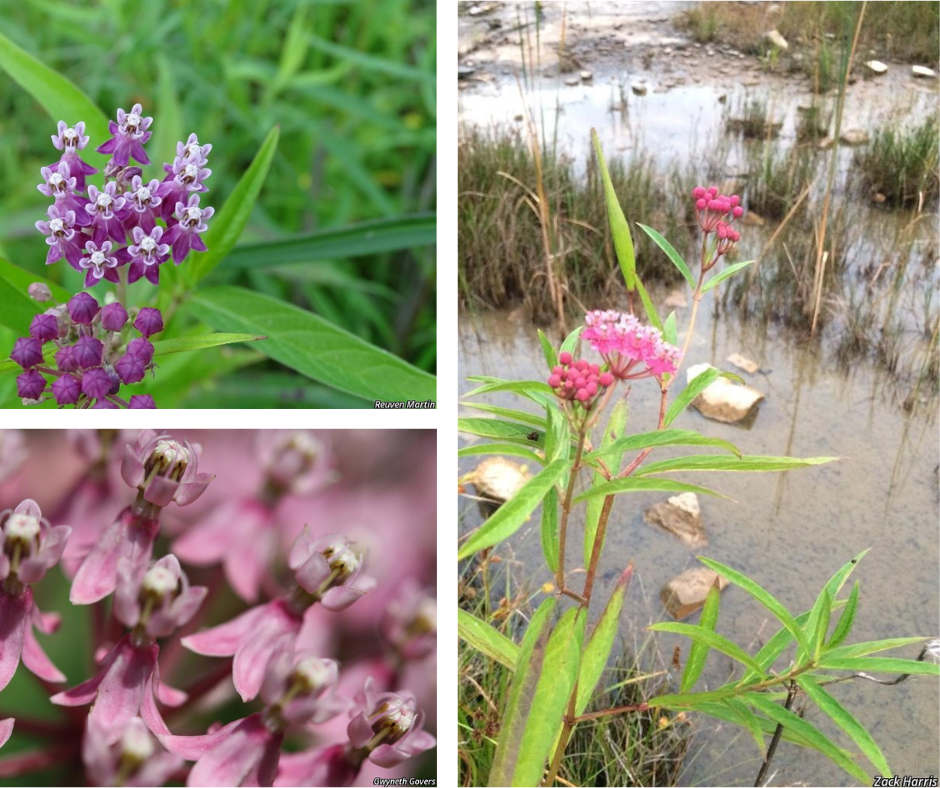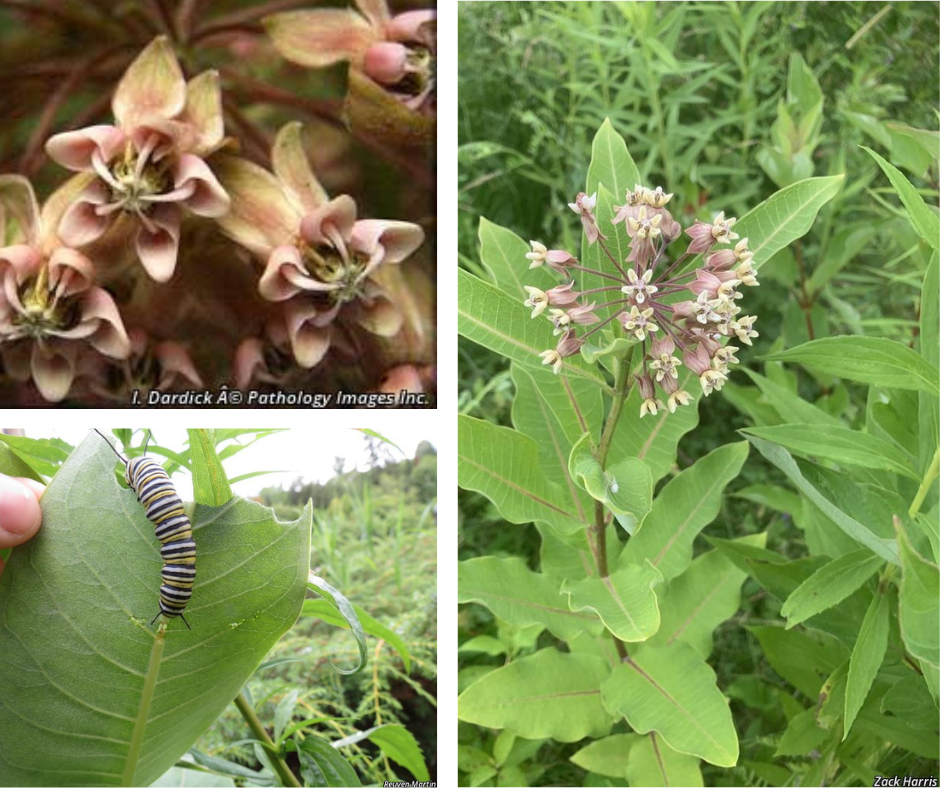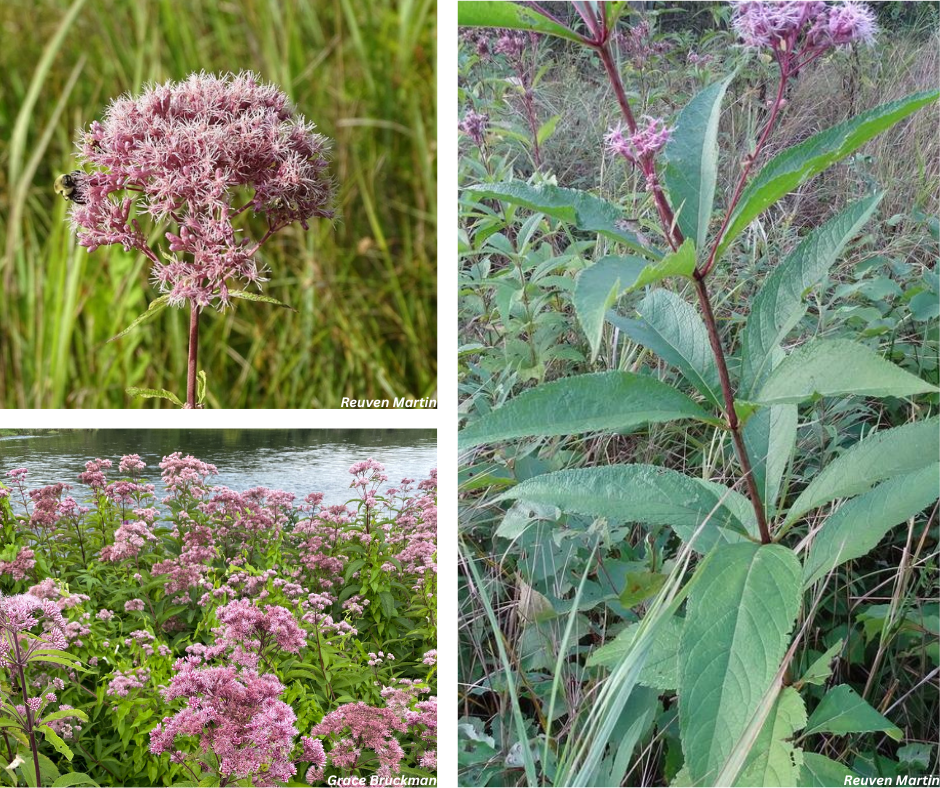
We collect basic website visitor information on this website and store it in cookies. We also utilize Google Analytics to track page view information to assist us in improving our website.
Written by: Grace Bruckman
It’s that time of year when everything seems to be in full bloom and the pollinators are working overtime. Milkweed plants are a vital component of the ecosystem, providing critical habitat and food for Monarch Butterflies (Danaus plexippus) and various other pollinators. Within the milkweed family, two common members, Swamp Milkweed (Asclepias incarnata) and Common Milkweed (Asclepias syriaca), often leave nature enthusiasts puzzled due to their similar appearances.
Furthermore, another important pollinator plant that often gets confused with milkweed is Spotted Joe Pye Weed (Eutrochium maculatum). This post will provide information on the distinct characteristics that set these three plants apart, allowing you to accurately identify them on your next nature walk.
Swamp milkweed is a sweetly fragrant, perennial plant that blooms from June to September. This plant is an important larval host to the Monarch Butterfly (Danaus plexippus) and Queen Butterfly (Danaus gilippus). Swamp Milkweed prefers full to partial sun in damp or moist areas close to wetlands, rivers, and lakes - usually not found in drier areas.
Height: 3-5ft
Leaves: Opposite, simple, short, narrow, lance shaped (lanceolate) with smooth edges and a glossy appearance
Flowers: Clusters of 10-40 pink to purplish with five petals on each flower
Fruit: Seed pods are smooth
Stem: Branching at central stem
Links to more Information on Swamp Milkweed
Network of Nature - Swamp Milkweed
Minnesota Wildflowers - Swamp Milkweed
Ontario Wildflowers - Swamp Milkweed
Prairie Pollination - Swamp Milkweed

Photo 1. Swamp Milkweed flower clusters and growth form
Common Milkweed is a perennial plant with a unique floral fragrance that blooms June to August. This plant is also an important larval host to the Monarch Butterflies. Unlike Swamp Milkweed, this plant prefers sunny, open, dry areas and can often be found in ditches, meadows and roadsides.
Height: up to 6ft
Leaves: Opposite, whorled, broad, oval shape with prominent central veins. Smooth on the top with small, soft, fuzzy hairs on the underside
Flowers: Pale pink to white dome-shaped flowers with 5 petals
Fruit: Large, green, prickly, ovate seedpods
Stems: Branching occurs only close to the flowers
Links to more information on Common Milkweed
Network of Nature - Common Milkweed
Minnesota Wildflowers - Common Milkweed
Ontario Wildflowers - Common Milkweed

Photo 2. Common Milkweed flower clusters and growth form. Monarch caterpillar feeding on Common Milkweed leaf.
Spotted Joe Pye Weed is a plant that attracts native pollinators and appears very similar to milkweed species. This plant tends to grow in wet and moist soils such as damp meadows, marshes and along the edges of rivers.
Height: 4-7ft
Leaves: Whorls of 3-6 lance-shaped leaves
Flowers: Umbrella-like clusteres of small tubular pink to purplish-pink florets that form collectively in a dome
Stems: Sturdy purple stems with spotting
Fruit: No seed pods are formed. Flowers turn into small brown seeds
Links to more information on Spotted Joe Pye Weed
Network of Nature - Spotted Joe Pye Weed
Ontario Wildflowers - Spotted Joe Pye Weed
Minnesota Wildflowers: Spotted Joe Pye Weed

Photo 3. Spotted Joe Pye Weed flower clusters and growth form.
Other Plant ID Resources
Nature Watch - Identifying Milkweed
Ontario Wildflowers - Plant ID
OSU - Plant ID - Examining Leaves
Eat The Planet - A Guide to Identifying Plants
Join our email list to receive occasional updates about Network of Nature and ensure you get the news that matters most, right in your inbox.